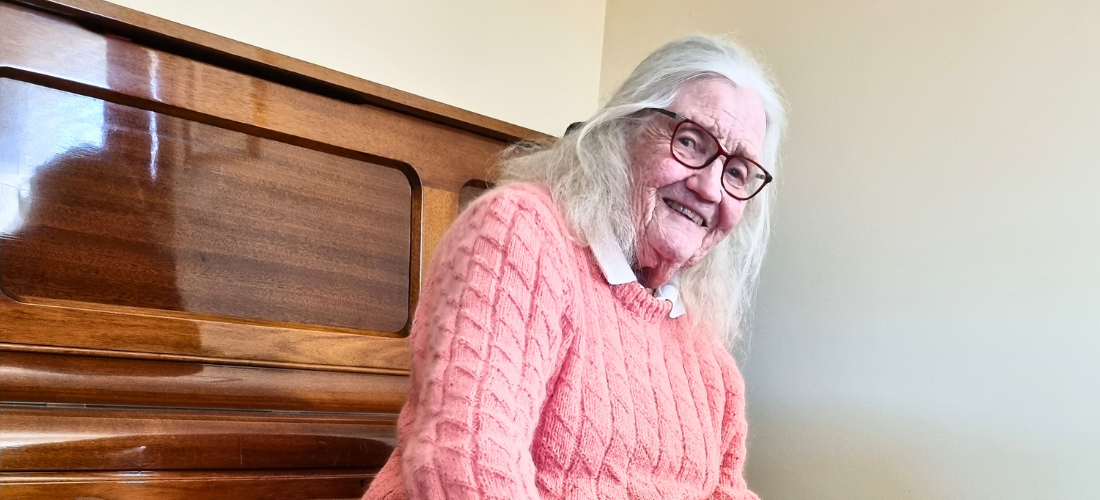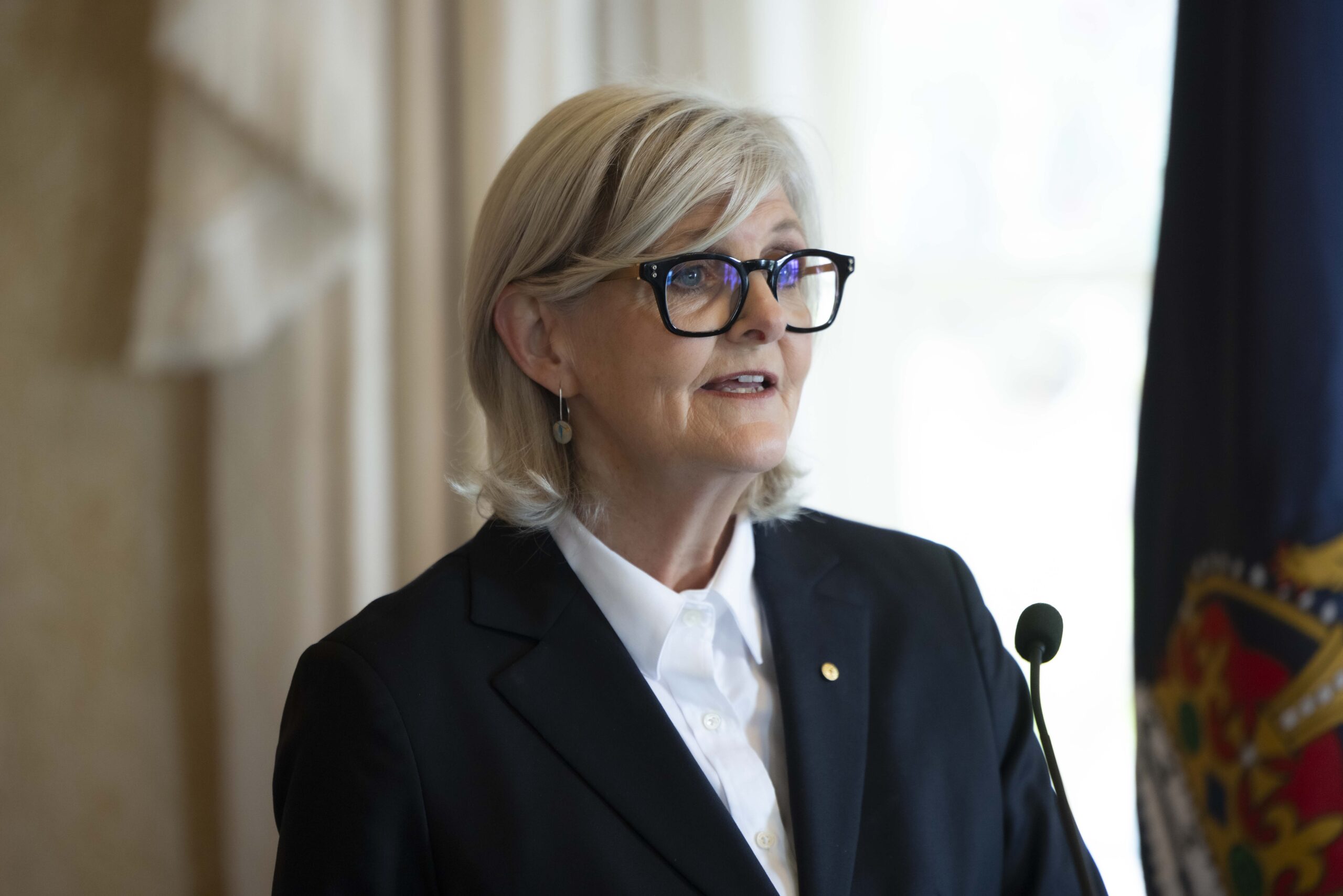My eyes are our holiday money. I’ve even considered giving up my injections. It’s a shame treatment is so expensive for something as fundamental as eyesight.
Ann (86yo) and her husband Dunkley (92yo) live 15kms outside of Mandurah in WA.
Ann has age-related macular degeneration (AMD) in both of her eyes and needs sight saving injections in each one. The length of time between injections has increased making it much more affordable. She now has injections about every 11 weeks.
“Financially it was getting a bit dicey when I was having the injections every two to four weeks – having treatment for both eyes is quite a price to pay. It’s much better now I don’t need them as often.”
“We have no private cover – we rely on Medicare and we are out of pocket from $200 each visit – our savings certainly didn’t grow a lot that’s for sure.”
Ann says they have had to make sacrifices to keep up with the cost of her eye treatment.
The cost of my eyes has prohibited us from having a holiday. It’s frustrating because we enjoyed travelling in our caravan all around Australia. We loved to think about where we would visit.
“Luckily we have never been smokers or great drinkers, so we don’t have that expense.”
With less frequent visits for her eye injections, Ann is hoping to save enough money to get away for a few days. But she says it’s shocking how prices are going up in Australia.
“Our grocery bill has gone up $50, we’ve had to cut back on meat and the expensive stuff.”
Ann says reducing the cost of treatment would make a big difference.
In our new report Investing to Save Sight shows by improving affordability through eliminating out of pocket costs for an additional 10% of affected people can save government, and those pensioners on treatment, hundreds of millions of dollars.
“Even though the injections are not as frequent at 11 weeks, the cost of living doesn’t make it easier to save.”
“It’s even crossed my mind about stopping the injections, but my sight is so important.”
Ann belongs to a photography club so her sight is essential for her hobby.
“Without eyesight there isn’t much you can do. Our lifestyles have been built around having good eyesight.”
“I feel sorry for pensioners who don’t own their own home having to pay rent plus everything else, it would be no wonder if they can’t afford treatment.”
Ann’s husband drives the 30 minute trip to get her eye injections in Mandurah. She says there’s public transport for her area but it involves two buses and a big walk. She says people living further away would be disadvantaged.
“The service doesn’t go beyond where we live so they would need a driver to go to Mandurah if they lived further out.”
Our report also shows that most Ophthalmologists are based in major cities (approximately 84%) and the remaining 16% service the 7 million Australians in rural and remote communities. People struggle to commit to their treatment. Many people have to travel upwards of two hours or 100km or have no access to treatment at all. Our economic modelling shows that establishing treatment services in more accessible locations and reducing the travel burden where travel lengths exceed 100km could save government $2.11 billion dollars.
Ann says the Ophthalmologist she sees has a busy practice.
However, this vital treatment carries a price tag.
Kerrie is out of pocket almost $200 per injection, which takes a serious chunk out of her pension every seven weeks.
Alarmingly, the independent Medicare Benefits Schedule Review Taskforce for Ophthalmology recommended a 69% cut to the Medicare rebate for these sight-saving eye injections.
PricewaterhouseCoopers (PwC) modelling commissioned by Macular Disease Foundation Australia (MDFA) calculated that cut would increase patients’ average out-of-pocket costs from $1900 to $3900 per year – double if you need injections in both eyes.
When asked whether cost is an issue for her, Kerrie replied: “It is, because I don’t have private health.
“I don’t know what I’d do if Medicare couldn’t cover some of it. I know I wouldn’t be able to pay out that sort of money.
“Oh look, I know if I desperately needed it, my kids would help. But it would take a lot to ask them because I don’t like that sort of thing.”
Ann says the Ophthalmologist she sees has a busy practice.
When we go into the practise, she must have 20 or 30 people go through in the hour we’re there.
Ann says the Ophthalmologist is so busy, if you want to make an appointment it could be weeks. She says there needs to be more medical services in outer metropolitan areas.
“There’s not enough services for people outside of cities. There’s just not enough doctors and so forth. People need to be encouraged more to work outside of the cities.”
More information
About Macula Month
Macula Month is MDFA’s annual campaign each May to raise awareness of macular disease – Australia’s leading cause of blindness and severe vision loss.
Currently, 80,000 Australians receive regular anti-VEGF eye injections to retain vision and prevent blindness. Since their introduction in 2007, eye injections have saved the sight of countless Australians living with neovascular AMD and diabetic macular oedema.
One in seven Australians over the age of 50 have some evidence of Age-related Macular Degeneration (AMD). This equates to approximately 1.5 million people with AMD. Current treatment is in the form of eye injections. Sadly, almost half stop treatment within five years putting them at the risk of blindness.
In 2023, MDFA recommends modest government improvements to three key areas to help people stay with their eye injection treatment path. Through improved health literacy, improved affordability, and improved accessibility to increase the number of people staying with their treatment, the government can save up to $2 billion dollars. Our report Investing to Save Sight shows improved affordability, eliminating out of pocket costs for an additional 10% of affected people can save government, and those pensioners on treatment, hundreds of millions of dollars.
About Macular Disease Foundation Australia
MDFA is the national peak body representing the voice of the macular disease community. We are committed to reducing the incidence and impact of macular disease.
As well as advocacy on behalf of every Australian living with and at risk of macular disease, we provide a range of free resources and support services via our National Helpline (1800 111 709) and our website (www.mdfoundation.com.au).
About macular disease
Macular disease covers a range of painless conditions that affect the central retina (the macula) at the back of the eye. The most common are age-related macular degeneration (AMD) and diabetic retinopathy, including diabetic macular oedema .
Diabetic eye disease affects between 300,000 and 400,000 Australians – the leading cause of preventable blindness among the working-age population.
Media contacts
- Steven McArthur, Director, Buzz Group
- Email: steven@buzzgroup.com.au
- Phone: +61 412 457 471
- Natasha Rontziokos, Communications Lead, Buzz Group
- Email: natasha@buzzgroup.com.au
- Phone: +61 421 272 390
References
PwC (2019). Impact of IVI rebate changes
Investing To Save Sight. Health and Economic Benefits of Improving Macular Disease Treatment Persistence. May 2023. This MDFA report was supported by PwC Australia.
Posted: 28 April 2023

















